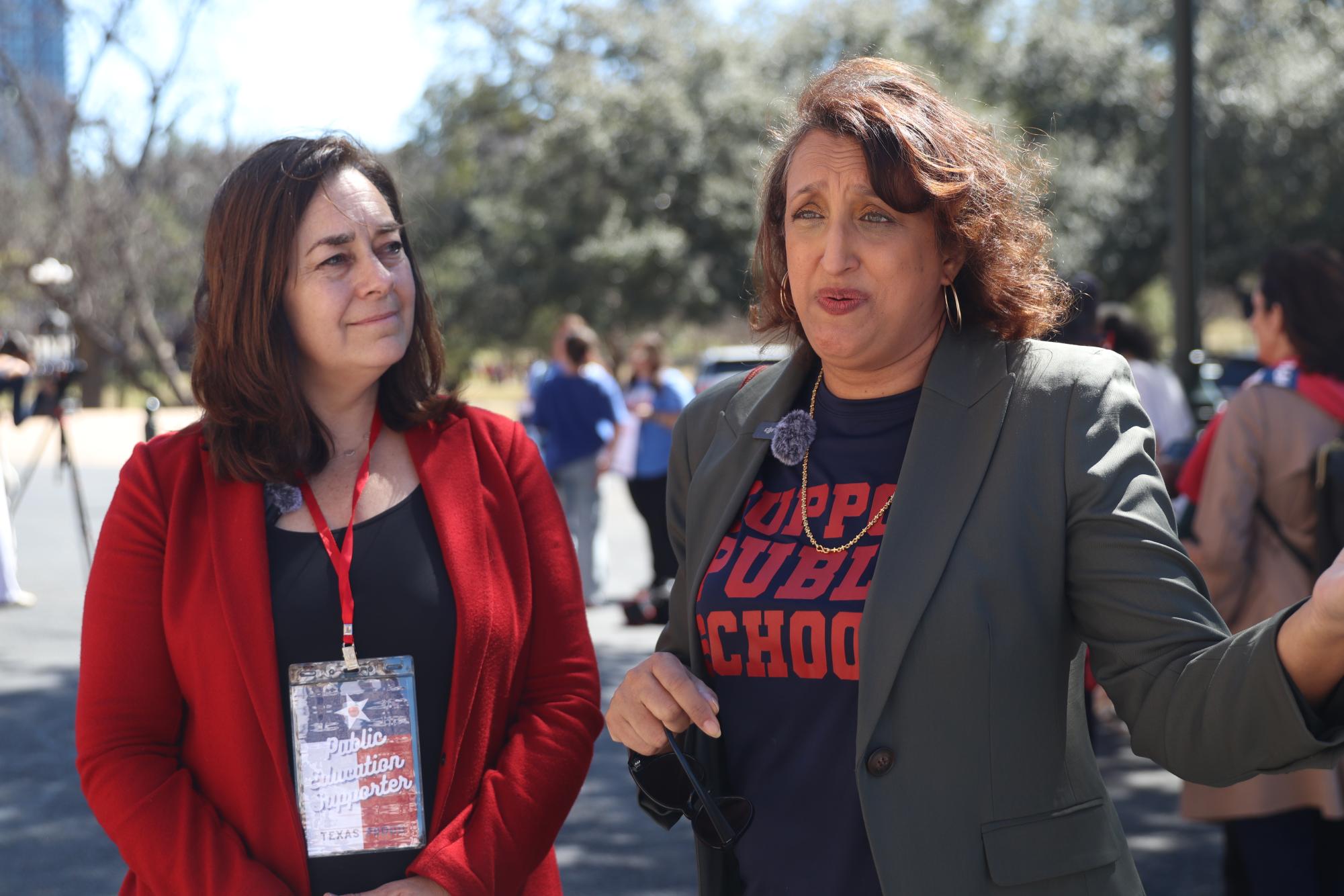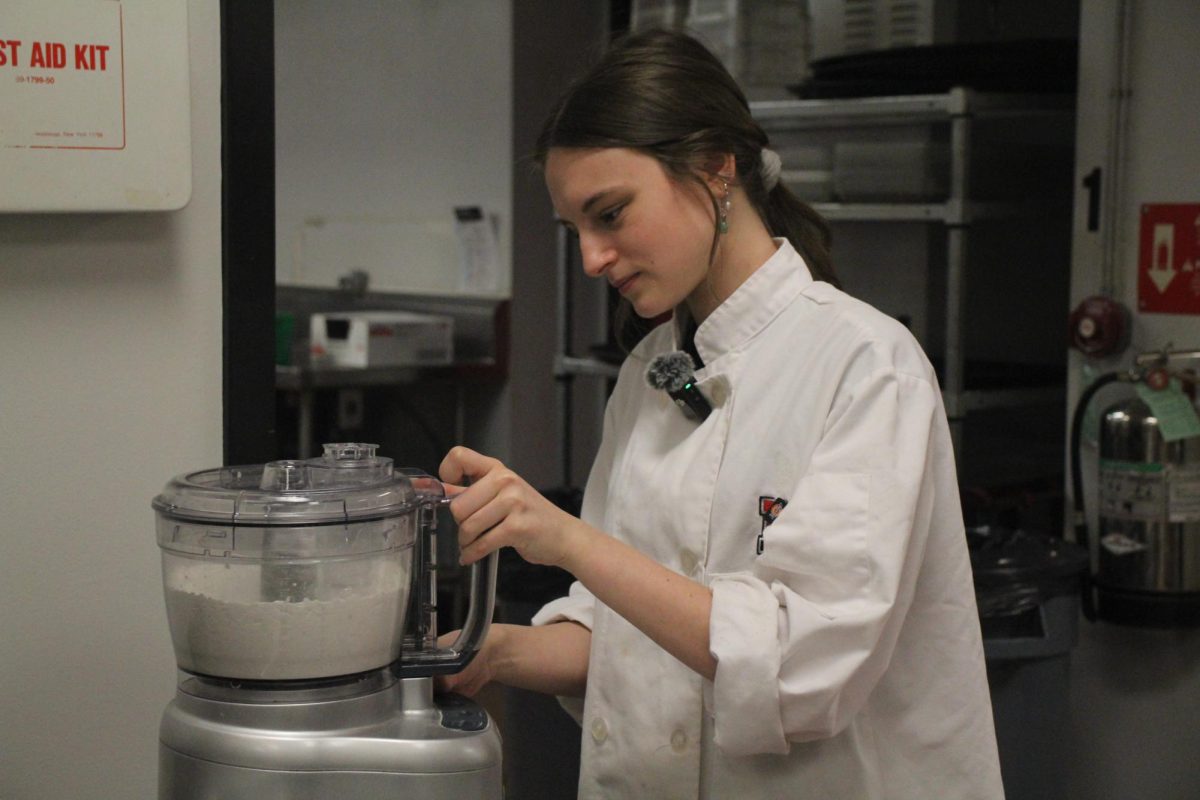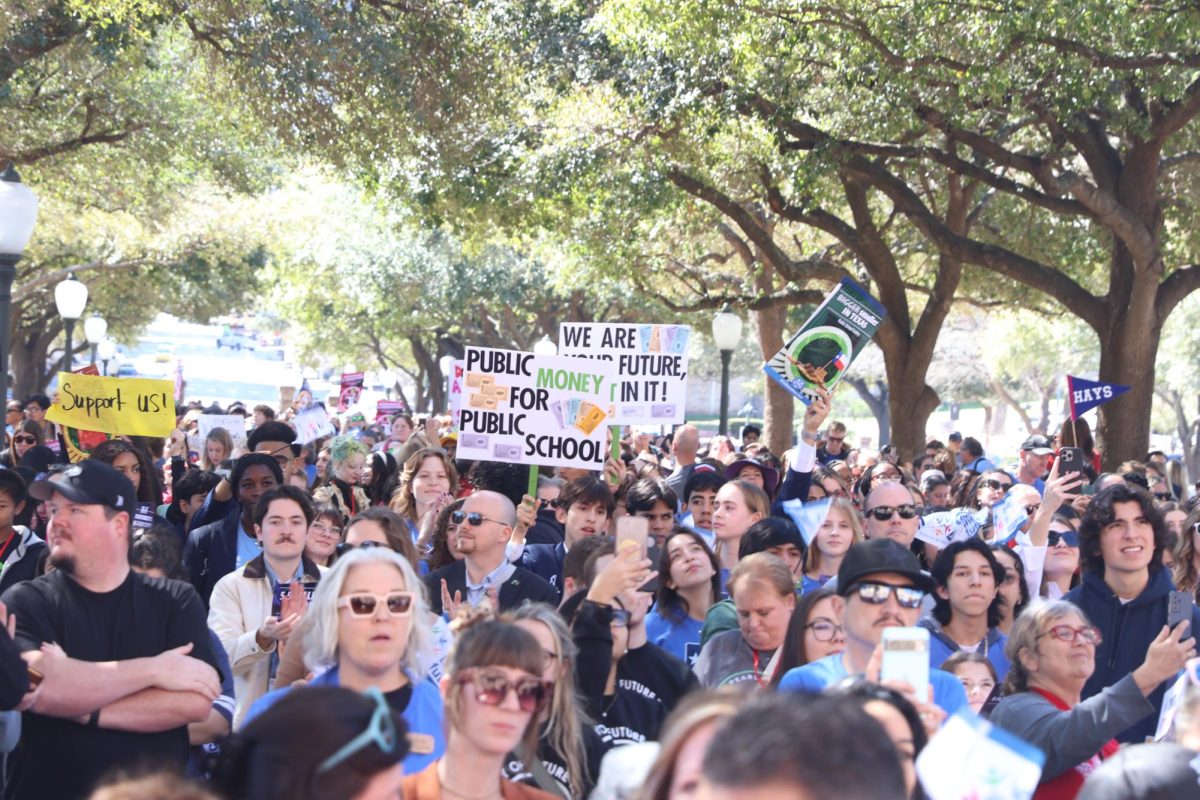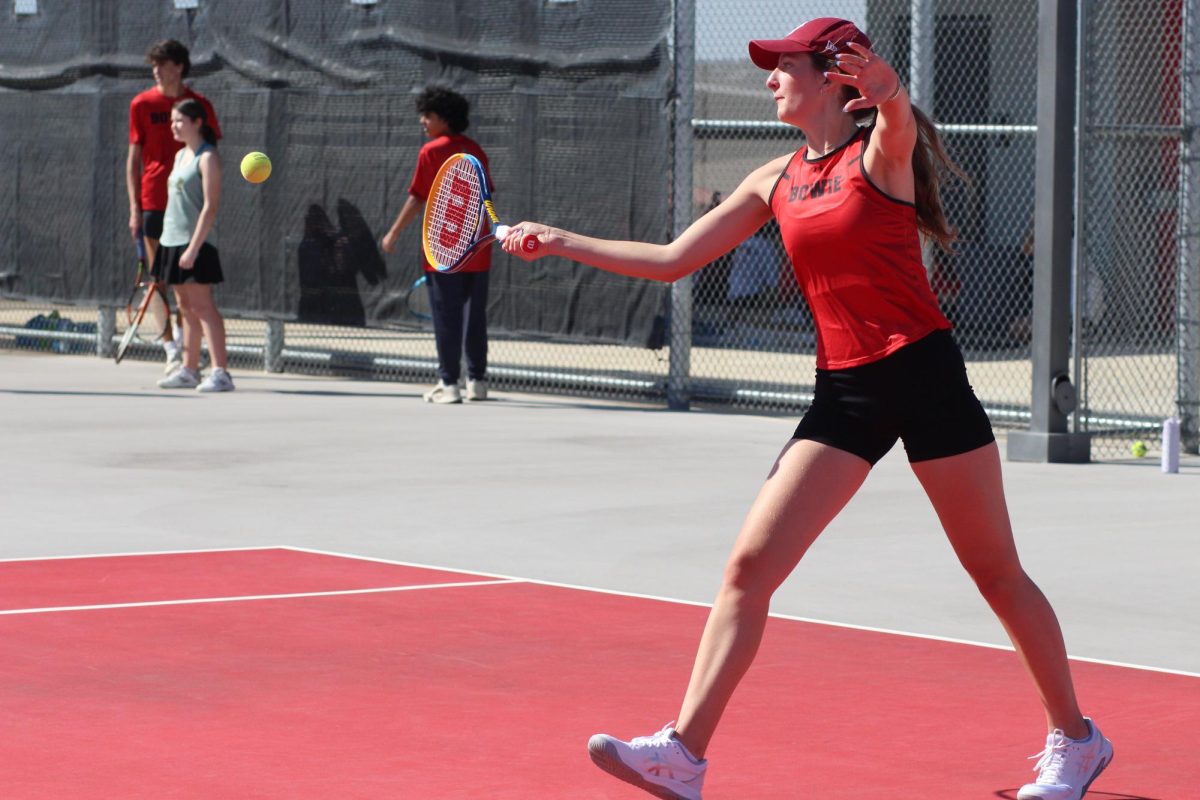Senior Nate Motes walks through the Bowie hallways. In the winter, he’s freezing, and in the summer, the hallways reach scalding hot temperatures because there is no AC or heat. Once he enters his class, he notices that his class is packed full of students, and he can barely move around the room. Motes is filled with fear and worry as he thinks about having to deal with large class sizes once he becomes a teacher after graduating college.
According to the Austin Monitor, on March 1, 2025, Austin Independent School District (AISD) enacted a hiring freeze throughout the district in every department except special education. This hiring freeze aims to help the district exit the financial deficit that has grown since the current school year’s budget was approved in June. Recently, it was announced that the spending deficit had jumped from $78 million to $110 million despite AISD cutting $26 million in spending.
“I know for sure that the hiring freeze can’t last for long,” social studies teacher Matthew Parente said. “Every year, there are teachers who retire or transition to different careers. You can usually assume that at least three teachers from each department are going to leave at the end of the year, so the district is going to have to hire at least one teacher.”

AISD district leaders attribute the rising budget deficit to falling property values in the area. As reported by KVUE, the district takes in less property tax revenue due to the falling prices. After the increased property tax (Prop A) was passed in November of 2024, an additional $141 million moved into AISD coffers. Despite this, according to CBS Austin, AISD considered changing teacher’s schedules from teaching six out of eight to seven out of eight as this would reduce not only spending but also the amount of planning time a teacher has during the day. While this solution has been on the table for several years, the district recently assured teachers it wouldn’t happen in the 2025-26 school year.
“If there aren’t enough teachers in our classrooms, then students won’t get the one-on-one attention they need to be successful,” senior Eva Jaco said. “Whenever a teacher comes over to help me, I understand the topic completely as soon as I get one-on-one help. Teachers need to continue to be able to do that.”
According to a story in the Austin American-Statesman, AISD isn’t the only school district in Central Texas struggling with its budget. The Eanes school board decided to close Valley View Elementary School and their Spanish immersion program to reduce $2.6 million from what would’ve been a $6.3 million budget deficit. The story also indicated that the Texas Senate is attempting to pass a budget proposal that provides $4.9 billion for teacher pay raises and changes payment to the Teacher Incentive Allotment program, which rewards teachers for having students who perform well on state tests.
“Teachers can get compensated by the state if they teach STAAR-tested courses, so if teachers are thinking about the money, then they might be trying to teach those courses,” Parente said. “My biggest concern is that if a teacher passes away, which happened at Austin High, a math teacher passed away in the middle of the year, or if a teacher quits midway through their term, that can cause a lot of chaos in school, especially for the teachers who stay.”
According to KUT News, AISD has already eliminated 55 vacant transportation positions, including drivers and mechanics. The district has said that those cuts would not impact transportation services for students. Additionally, the district has discussed making master scheduling, the process of determining things like which classes are available and when, more efficient. The district hopes that adjusting the way they schedule it will reduce the number of classes that have a small number of students in them.
“If a teacher has a large number of students in each class, that is just an ineffectual way to teach,” Parente said. “I’ve done the math and if I have 200 students and I want to spend five minutes a week per student then I would need probably over 15 hours a week and we don’t even get that much planning time so it’s going to cascade teachers lives outside of school to try to get everything done for each student.”
According to AISD, the district’s expenses rise due to several factors, including energy use, fuel, and staff raises to keep up with the increasing costs of living. The state has not increased the funding that it provides to AISD since 2019. Additionally, federal funding has decreased even further due to a decline in the number of students who are identified as economically disadvantaged and a reduction in the number of federal reimbursements for services provided to students.
“In 2009, the legislature significantly cut back on the amount of money that they were providing to schools, but then in 2019, they invested back into public education with a historic amount, but that only gets the budget back to what it should’ve been in 2009,” Parente said. “The amount of money that they invested doesn’t take into consideration the interest or inflation that potentially would’ve happened, so if you think about it, we’re behind financially.”
According to AISD’s website, in 2023, Texas Governor Greg Abbott said that he would only approve school funding increases if some sort of voucher bill became law. However, legislators have been voting against vouchers, which has directly caused multiple bills, such as raises for teachers and funding for school safety, to not be passed. With funding increases not being passed at the legislative level, Motes feels that this is preventing Bowie from getting the funding it needs, and instead, programs like Recapture (Robin Hood) are taking away even more money from AISD.
“The district is continually increasing the Robin Hood stuff to the point where smaller districts have significantly nicer buildings compared to Bowie,” Motes said. “I’ve noticed during theater UIL when we compete against smaller districts like Arlington, they’ll have all of this insane tech and all of these nice costumes, and it’s like, where do they get all this money from? From our district? And then we have our teachers over here struggling to afford to fund our show for the year.”
According to a 2021 report by the Association for Career and Technological Education (ACTE), 86% of state directors reported a moderate or severe CTE shortage in at least one CTE career cluster in high school. Similarly, Education Week feels that CTE teachers would ideally have experience in their given industry, and switching from working in that industry to teaching would result in a significant pay decrease. Additionally, CTE teachers face a unique challenge since they have to pass on important information to their students while also keeping up with an ever-involving industry.
“I do think fine arts and CTE programs will be affected by this hiring freeze because there’s a plethora of English, math and science teachers, but CTE teachers are harder to find,” Motes said. “With fine arts teachers, they have to put in long hours after school, and they don’t get paid well, which might make it harder for the district to find teachers to fill those positions.”
According to the Texas Tribune, in 2015, Texas lawmakers passed legislation that allows public schools to hire teachers without formal classroom training,and in almost a decade after the legislation passed, the percentage of uncertified teachers ballooned by 29%. Since some teachers may not be getting conventional training, it falls on the district to fill those gaps and provide new teachers with the information they need to be successful.
“If the hiring freeze extends into the summer and the district waits until September to hire teachers for next school year then those teachers will have no prep time and they won’t know what class they’re teaching until the last minute and they have to hit the ground running which can be very difficult,” Parente said. “So much of the funding issues are out of the district’s hands, and honestly, the state needs to support education, and funding vouchers is not the answer, the state allotment per student needs to go up drastically.”








